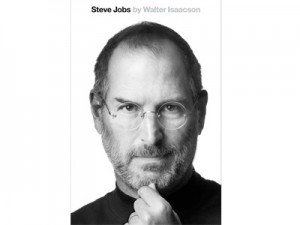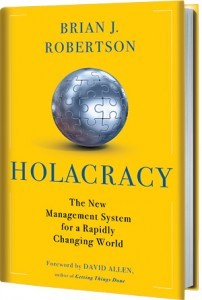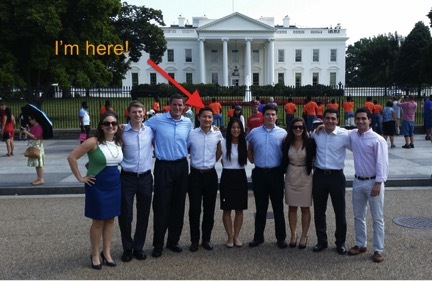Rod Collins's Blog, page 10
October 27, 2015
The 3 E’s for Building Support for Critical Projects in Difficult Circumstances
by Gretchen Nadasky
Stakeholder investment is the driving force of any successful enterprise undertaking. One of the most important indicators that a corporate project will be initiated is Executive Sponsorship. Taking time to secure a mandate is an excellent investment because it establishes commitment and sets the stage for resource allocation. Similarly, support from a broad range of stakeholders is a good predictor that a project will be successfully executed. Unfortunately, many project managers wait until an initiative’s “Change Management” phase to address stakeholders. Rather than wait, it is better to assess the circumstances in which the project arises and build support as early as possible.
Observing that many projects are sabotaged by lack of buy-in before they even get off the ground, we developed The E3 Methodology to build momentum at the very early stages of initiation. The E3 Methodology is predicated on identifying the scenario surrounding the project, choosing an approach to mitigate potential resistance, applying tactics for success and taking decisive actions that will empower stakeholders and build broad cooperation. Interpreting a situation and choosing the right approach are key to gaining traction for an initiative very early in the planning stages—before it is socialized and established.
Identify the Current Scenario
Corporate projects can come to fruition under a variety of circumstances. When a plan of action comes from the top down, adoption is likely—people feel they have no choice! However, when an objective or initiative comes from an individual or group it is more likely to hit resistance. We have defined three common scenarios illustrating the range of circumstances in which projects may emerge: The Pain Principle Scenario, The Barn Door Scenario and the Elements of Fire Scenario.
The Pain Principle Scenario: In this situation there is general recognition of a problem, but there is no sponsorship for a solution and the subject is avoided. Some examples of The Pain Principle Scenario include: a change in the regulatory or litigation environment that increases risk, employee frustration about a process that causes inefficiency, or the emergence of a competing product that is beginning to gain market share. If an individual steps up to address the issue on their own they will need to adopt an engagement strategy to build awareness and recruit supporters.
The Barn Door Scenario: The image evoked in this situation is of a farmer realizing too late that a cow got out of the barn – the problem has occurred and it is necessary for someone to take ownership and address it. Remediating a disaster that has already happened can be tricky because fingers will be pointed, blame will be assigned and tensions may be high. In this situation, it is important for the person or team who are addressing the issue to quantify the current state and expected remediation outcomes. Examples of The Barn Door Scenario may be a lawsuit or regulatory fine, a security breach or profit shortfall.
The Elements of Fire Scenario: Imagine a situation where you can sense impending doom but others see only beautiful nature. It can be very difficult to gain a critical mass of support for a project with the goal of prevention. There may be only one person or group uniquely positioned with the facts and perspective to see the significance of the issue, and it is their job to communicate and convince stakeholders of its importance. The Elements of Fire Scenario is sometimes present when there are complex financial, regulatory or technological issues that require specialized knowledge to solve. The facts of the situation must be approached with enthusiasm instead of doom to garner support of an otherwise ambivalent group.
Choose an Approach and Take Decisive Action
Each scenario addressed in the E3 Methodology should be approached differently. The Pain Principle scenario may be addressed by engaging stakeholders, the Barn Door scenario depends on setting expectations and the Elements of Fire situation is most effectively attacked with enthusiasm. In addition, a project may emerge in a combination of these circumstances and would then be addressed with multiple approaches. It is crucial to understand the environment so that the approach matches the situation and informs the tactics employed to gain support. Once the scenario has been defined we suggest choosing the approach that will deliver optimum results.
The Engagement approach addresses the lethargy that is associated with the Pain Principle Scenario. Unlike the Barn Door scenario, there may not be a high-level of urgency felt by stakeholders, but there is a recognition that a problem exists that isn’t present in the Elements of Fire Scenario. Increasing engagement requires communication and cooperation building. Start by studying and understanding the key values of the organization or the group and whose participation is required. Next, introduce or connect those values with the initiative. To gain broad engagement, the message must stay positive and focus on the future state gains of the project. As soon as possible, share small wins to increase a sense of ownership of achievement that will increase participation and power the project forward. Engagement happens when people feel they have a personal stake in outcomes.
Setting and managing expectations is crucial when a problem has already occurred and must be remediated, as in the Barn Door Scenario. In this case, there is acknowledgement of the problem and urgency is high, but the pressure to succeed can discourage direct participation. The project owner may find herself carrying most of the responsibility. To manage expectations, first identify metrics that will illustrate progress and can be accurately measured. Keep stakeholders informed by scheduling and presenting these measurable deliverables. Communicate both results and the efforts required to achieve short-term and long-term goals. Setting expectations with quantifiable metrics and milestones at the outset helps define realistic goals and keeps players focused in a volatile situation.
The most difficult and sometimes frustrating scenario for a potential project is The Elements of Fire situation. In today’s world of specialized skills and highly trained knowledge workers, there are many instances where only a handful of people are aware of an emerging situation that could have devastating widespread consequences in the future. Those who can identify a potential future problem must be very passionate and persistent to gain the help and resources for a project where there is no immediate obvious need. Approaching the Elements of Fire with enthusiasm means crafting a message that highlights the positive outcomes rather than fear or threats. The trick to this approach is clearly articulating the problem repeatedly until some people can see it themselves, starting with supporters who may have a stake in averting the probable crisis.
Building support for a project is strategic demanding and takes time, effort and thought but is well worth the investment. Without support, projects can meander, languish or fail completely. Use the E3 Methodology to identify the existing circumstance, choose the correct approach and implement the tactics that will engage stakeholders, set their expectations and build enthusiasm for the initiative. It is never too early to bring more people to the table who will help or at least not resist the change that is inevitably required for any project’s success.
E3 Methodology in Brief
Gretchen Nadasky is a Manager at Optimity Advisors. She advises clients on initiating, executing and sustaining projects in Information and Knowledge Management and has operationalized the E3 Methodology to achieve success.
October 26, 2015
The 3 E’s for Building Support for Critical Projects in Difficult Circumstances
October 20, 2015
Starting a Career in Consulting: An NYU Alumnus Story
by Jack Yip
One of the most important decisions we make in college is choosing our career. Our first job determines the skill set we will develop, and has a significant impact on future jobs we plan to take. I chose to begin my career in consulting because I wanted to strengthen my interpersonal skills and to develop a broad understanding of how businesses work in various industries.
I utilized NYU Wasserman’s Career Center to land both my financial planning internship and my consulting job post-graduation. As a freshman, I thought I wanted to become an actuary. However, I ultimately decided that I would prefer a job that allowed for more client and team interactions, which is exactly what a career in consulting provides. I specifically looked for a consulting firm where I would be placed as an external consultant at a client. This would allow me to work for multiple clients over the course of my job, as opposed to an internal consultant, where I would be placed on projects within a single company.
In the past year, I’ve had the opportunity to work on multiple projects in a variety of team settings, which has helped me to develop an invaluable and highly transferrable set of skills. I’ve learned to facilitate client interactions, streamline business processes, and stay focused in high-pressure situations.
I’ve been fortunate enough to enjoy a great work-life balance at my firm. My firm’s core values include celebrating diversity, having fun, nurturing talent, team focused, thinking big, delivering quality, and standing together as one. Not only am I encouraged to reach out to other project teams to learn about their work, I am also welcomed to express my interests in projects I would like to be involved with, a privilege that is not available at all consulting firms. As a young professional, it’s crucial that I reach out and learn as much as possible from those around me. I have made it a priority to take every opportunity to expand both my network and my knowledge.
Another way I contribute to my firm is by participating in internal workgroups such as recruiting, professional development, and social media. For those who are more adventurous, they can start their own! Last year, two of my colleagues at the Associate level created a Health and Wellness workgroup, and were able to get over 200 of our employees to participate in a 6-week long Steps Challenge. For myself, in addition to helping out with recruiting (i.e. organizing on-campus recruiting activities), I have also had the opportunity to publish weekly technology tips for the company on topics ranging from using Apple products to creating pivot tables in Excel.
As an avid traveler, I decided to study abroad in both Shanghai and Sydney. Working as a consultant, some of my greatest business experiences have been on the road in a host of different cities. Depending on the dynamics of the project, a consultant like myself could potentially work from our home company office on Mondays and Fridays, and work on the client site Tuesdays through Thursdays. The constant change of scenery keeps me engaged and excited.
Regardless of your choice of career, I strongly suggest that you reach out to recent graduates working in fields you are interested in, as you will be able to learn about their experiences and assess whether a career in their respective fields is right for you.
Jack Yip is an Associate at Optimity Advisors. He is a gradaute of NYU where he majored in Finance and International Business.
October 19, 2015
October 13, 2015
The Last Heroic Leader: Remembering Steve Jobs
by Rod Collins
October 5th marked the fourth anniversary of the passing of Steve Jobs. Although he is no longer with us, few business leaders have had more influence on the shape of our day-to-day lives. A mere ten years ago, there were no iPhones or iPads. There were no apps, and the Internet was something you could only access if you were sitting at a computer. None of us a decade ago understood what it meant to be part of a hyper-connected world where we could be available to each other anytime, anyplace. Jobs, however, had a clear picture of the human potential that could be unleashed if we could find a way to continually connect everyone on the planet.
 When Jobs returned to Apple for his second stint as its CEO, this picture became his company’s compelling purpose, reflected in a bold mantra to “think different.” This purpose served as the platform for the remarkable turnarounds of both his company and his reputation, as Apple catapulted to the top tier of the Fortune 500 and Jobs was being lauded in the business press as the most admired CEO of his time. While these were indeed outstanding accomplishments, perhaps Jobs’ greatest legacy—and what we will remember most—is how, in such a short time, his vision became everyone’s reality, thanks in large measure to the amazing company he built.
When Jobs returned to Apple for his second stint as its CEO, this picture became his company’s compelling purpose, reflected in a bold mantra to “think different.” This purpose served as the platform for the remarkable turnarounds of both his company and his reputation, as Apple catapulted to the top tier of the Fortune 500 and Jobs was being lauded in the business press as the most admired CEO of his time. While these were indeed outstanding accomplishments, perhaps Jobs’ greatest legacy—and what we will remember most—is how, in such a short time, his vision became everyone’s reality, thanks in large measure to the amazing company he built.
A Flawed Hero
In a few days, the second movie since Jobs’ passing will open in theaters around the globe. It will attempt to help us better understand both the person and the company that literally changed the world as we have known it. Jobs is an interesting character study because, while being perhaps the most successful business leader in the brief history of the early twenty-first century, Jobs was clearly a flawed hero. He had an artist’s temperament that could morph back and forth between charming engagement and mercurial rants. His intense passionate perfectionism made him a difficult person to work for; yet he was nevertheless admired and even loved by people who deeply believed that to be a part of Apple was to be a part of something special. Steve Jobs was a hero, not only to the people who worked for him, but also for all the people whose lives were transformed by the products he and his company created. Even though his customers never met him, much like the passing of a popular political leader or a celebrated entertainer, they felt connected to him and knew they would miss him.
Like all heroic leaders, Steve Jobs was larger than life. He had the wherewithal to not only singularly transform the company he returned to, but more impressively, the world he lived in. However, the transformation he enabled could very well mark the end of a long-standing leadership paradigm. Steve Jobs, in a way, is the personification of an inflection point in human history, which is why he is, in all likelihood, the last heroic leader. While he, himself, was dominant and autocratic, the products he created will make it difficult, in not impossible, to exercise this style of leadership in businesses in the future. That’s because Apple’s products have radically altered the dynamics of the way power works. In a hyper-connected world, power is derived from being connected rather than being in charge, which means the most effective leaders in this new world are collaborators rather than heroes.
Heroic Leaders
For well over a century, since the dawn of modern management in the late nineteenth century, the archetype for executive leadership has been the heroic leader. The steady hand of a confident take-charge personality at the helm in turbulent waters provides great comfort to board members navigating companies in difficult times. For example, one of the most visible and heralded performances of outstanding heroic leadership was the remarkable revival of the Chrysler Corporation in the 1980’s when Lee Iacocca was brought on as CEO and single-mindedly rescued the company from the brink of bankruptcy by executing an innovative product strategy to realize the carmaker’s largest annual profits up to that time.
Unfortunately, heroic leadership has an “Achilles’ heel.” While heroes can lead amazing turnarounds, corporate greatness is about staying power and decades of continual success. Although highly effective heroic leaders are indeed good leaders, they don’t necessarily leave behind great companies. Look at what happened to Chrysler after Lee Iacocca retired. A series of poor management decisions diminished many of the remarkable accomplishments of the 1980’s, leading up to automaker’s filing for Chapter 11 bankruptcy in 2009. Today Chrysler is a shadow of the company it once was.
A Great Work Culture
Jobs’ story, in a way, is very similar to Iaccoca’s. Both were brought on as CEO’s to rescue their companies from bankruptcy and both used innovative product strategies to improve their companies’ fortunes. However, where they differed is that, unlike Iacocca, Jobs left behind a great company. Jobs knew Apple’s products were revolutionizing the world of work by favoring collaborative networks over top-down hierarchies. With this in mind, he created a great workplace by eliminating layers of bureaucracy and enabling a culture where creativity and collaboration could flourish. Jobs was obviously successful because Apple has been a constant presence on the list of the 50 Best Places to Work since Glassdoor began compiling the annual list in 2009.
What makes Jobs a truly heroic leader is that he recognized a truly great company is more a reflection of a great work culture than a great leader. While great leaders may come and go, great cultures are what sustain corporate excellence from one generation to another. In his biography of the technology guru, Walter Isaacson relates how Jobs felt that the hardest work in business was building a really great company that will make a contribution and stand for something for generations. According to Jobs, “That’s what Walt Disney did, and Hewlett and Packard, and the people who built Intel. They created a company to last, not just to make money. That’s what I want Apple to be.” And so, the legacy of the last heroic leader lives on in the great company he left behind.
This article was originally published in the Huffington Post.
Rod Collins ( @collinsrod ) is the Director of Innovation at Optimity Advisors and the author of Wiki Management: A Revolutionary New Model for a Rapidly Changing and Collaborative World (AMACOM Books).
October 12, 2015
October 6, 2015
Object Lessons and Cautionary Tales: Articles About Big Entertainment Metadata
by Chad Beer
Working at the enterprise level with systems aimed at managing the information and assets of a single company, we feel the weight of user expectations honed by navigation and search on experiences on the web. Well-designed taxonomies and metadata models pave the road for intuitive search and navigation for site after site. The e-commerce search experience has generally become excellent. Entertainment services like iTunes and Netflix are just as successful at not only helping us find what we want but also predicting what that will be. The bar has been set very high.
These expectations are challenging but instructive. Enterprise level administrators of Digital Asset Management systems, Marketing Resource Management systems, or other information management solutions don’t have the seemingly limitless human and financial resources available to web and entertainment giants. Add limitations to time and bandwidth and competing business priorities, and it’s easy to understand why enterprises won’t or can’t develop solutions as comprehensive and sophisticated as iTunes, Amazon, or Google. Fortunately there are plenty of tools available to meet the information, asset, and content management needs faced by most companies. Technology solutions are evolving in complexity, and industry best practices are becoming more and more sophisticated. We don’t all need to become giants to achieve great things. That said, we have to model ourselves after somebody. Users (all of us) expect greatness, so we continue to strive for it while tending to the realities of other demands. We continue to learn from the accomplishments of today’s web based entertainment icons.
A recent article in The Atlantic drives this point home and inspired an informal survey of articles about Big Entertainment metadata. Below is a brief list of highlights from this survey. Each offers a peek under the hood at the metadata strategies driving these services. These tales offer us lessons and inspiration, and point out that the challenges of Information Management are universal no matter how big or small you are.
“The Tragedy of iTunes and Classical Music”,The Atlantic, July 28, 2015
This article was inspired by a discussion of what some iTunes users consider a weakness of the iTunes metadata model: a lack of fields that allow for detailed classification that meets the needs of classical music enthusiasts. It presents a lesson about understanding the needs of all users when designing a metadata model, accounting for the peculiarities of all asset types, and perhaps most importantly recognizing the customer’s demand for that classification.
“How Netflix Reverse Engineered Hollywood,” The Atlantic, January 2, 2014
Another article by The Atlantic, offering an in-depth look at Netflix’s predictive movie genres. This is a compelling view into the depth and variety in their schema and data structure. The story it tells emphasizes the degree to which human (not automated) insight and intelligence still underpin the analysis of content for developing categorization strategies and metadata schema. This is also a surprisingly entertaining read about the development of a metadata model.
“The New York Times Built a Robot to Help Make Article Tagging Easier,”Nieman Lab, July 30, 2015
This is a fascinating article about an automatic tagging tool developed by The New York Times. While many of us don’t have the resources for such robust custom-built solutions, this tale addresses puzzles of workflow integration and efficiencies, including the role of content creators in the tagging workflow.
“NetflixGraph Metadata Library: An Optimization Case Study”, Techblog.Netflix.com, January 18, 2013
A deep-dive look at a project undertaken by Netflix to reduce the memory load of their genre classifications. This look under-the-hood is technically focused but very accessible in its discussion of the information architecture behind these tags and their relationships.
Reading these articles, anyone working with metadata can take comfort in the knowledge that even the big guys face the same challenges we all do. Better than providing solace, however, they drive home the real value of thoughtfully designed metadata models and workflows, and can provide relatable anecdotal support for the efforts of Information Management professionals everywhere.
Chad Beer is a Manager at Optimity Advisors.
[4] Koszewnik , Drew. “NetflixGraph Metadata Library: An Optimization Case Study”, Techblog.Netflix.com, January 18, 2013
http://techblog.netflix.com/2013/01/n...
October 5, 2015
Object Lessons and Cautionary Tales: Articles About Big Entertainment Metadata
September 22, 2015
Holacracy’s Prime Organizing Principle: All Voices Matter
by Rod Collins
Over the past year, a new term has been added to the management lexicon: holacracy. The much-publicized adoption of this innovative and unfamiliar management system by Zappos has drawn both accolades and scorn from a bevy of business pundits. While much of the commentary has done little to advance the understanding of how this “bossless” approach works, the pundits have nevertheless piqued the interest of business leaders and workers alike who are starting to question whether a nineteenth century management model is sustainable in a twenty-first century world. After all, as the pace of change continues to rapidly accelerate, is it realistic to believe that a century-old management model will somehow endure while the rest of the world is reshaped by the technologies of the Digital Age?
 For Brian Robertson, the creator of holacracy, the answer to this question is an unequivocal “No.” In his recent book, Holacracy: The New Management System for a Rapidly Changing World, Robertson argues that most of today’s organizations are lacking in the capacity to evolve and adapt to fast moving business markets. That’s because the predominant management paradigm is designed to achieve stability and success through centralized planning and control. While plan and control is a blueprint that can work when change is incremental, it can be a fatal scheme when navigating a rapidly changing landscape, as Robertson learned first-hand when he was confronted with a serious life-and-death situation.
For Brian Robertson, the creator of holacracy, the answer to this question is an unequivocal “No.” In his recent book, Holacracy: The New Management System for a Rapidly Changing World, Robertson argues that most of today’s organizations are lacking in the capacity to evolve and adapt to fast moving business markets. That’s because the predominant management paradigm is designed to achieve stability and success through centralized planning and control. While plan and control is a blueprint that can work when change is incremental, it can be a fatal scheme when navigating a rapidly changing landscape, as Robertson learned first-hand when he was confronted with a serious life-and-death situation.
A Valuable Business Lesson
Roberson relates the story of how he learned a very valuable business lesson as a student pilot on his first long-distance flight. A few minutes into the flight, he noticed an unfamiliar light on the instrument panel indicating “Low Voltage.” Not sure what this indicator meant, he checked all the other gauges and saw that his airspeed and altitude were fine, the course was correct, and he had plenty of gas. With positive readings on what he considered the most important indicators, he decided the low-voltage light couldn’t be too serious. This turned out to be a bad decision that almost cost him his life when he was suddenly caught in a storm with no lights and no radio. Miraculously, Robertson found a way to safely land the plane.
As Robertson subsequently reflected on his misadventure, he realized that the near-fatal error he made was a common pattern in most organizations. He recognized that an organization, like a plane, is equipped with sensors in the form of its people, all of whom are capable of sensing the reality around them. Unfortunately, in command-and-control organizations, not everyone’s voice matters—some voices are considered more important than others. Consequently, the voices of the supposed less important people, like the low-voltage indicator, can be ignored because they have no vehicle for processing their insights into meaningful action.
With this insight in mind, Robertson decided he would pioneer a new organizational model in the software company he founded and that his prime organizing principle would be the simple premise that all voices matter.
A New Way of Organizing
Robertson called his new way of organizing “holacracy,” derived from the term holarchy, coined in the 1960’s by the author Arthur Koestler. Rather than relying upon a hierarchy of supervisors, Robertson designed his organization as an interconnected collection of self-organizing teams, known as circles. By eliminating supervisors and embracing self-organization, Robertson assured that no single person would ever have the authority to silence any one else’s voice.
Because there are no bosses to run meetings and give directions, one of the key structures of holacracy is a facilitated meeting framework used for conducting both tactical and governance meetings. Rather than engaging in advocacy debates where listening is rare and talking over each other is common practice, Robertson designed a multi-step meeting process that provides space for participants to voice their thoughts and ideas without being ignored or interrupted to assure that all information is fully available before decisions are made. An essential element of this process is a practice known as “clarifying questions.”
Clarifying Questions
Clarifying Questions is a discipline that prevents discussions from being hijacked by advocates who may become locked in a polarized debate. In far too many organizations, it’s not uncommon for meetings to quickly morph into hijack experiences in which two or three people dominate the discussion while the remaining participants become mere spectators. Hijacked meetings easily denigrate into a competition of ideas where the focus is on the sport of being right and where the ineffective acting out of passions divides the room into winners and losers—and the losers do not go complacently but rather find ways to thwart the hollow victories once everyone leaves the room. Clarifying questions is a simple practice that can effectively thwart the hijack.
The sole purpose of clarifying questions is to make sure that everyone’s point of view is heard. During this time, no reactions or dialogue are allowed because the focus is on making sure that all participants understand the presenter’s thoughts and ideas, not whether they agree, disagree, or have a different point of view. In holacracy, there is a separate round for processing reactions and suggestions. This division of clarifying questions from reactions puts in place a simple but powerful dynamic: before we agree or disagree or express another opinion, let’s be sure that we’ve heard what’s being said first.
When organizations embrace habits that emphasize the important of listening and understanding, they create climates where everyone knows that all voices matter. And when all voices matter, organizations have access to all the information they need to quickly adapt to the evolving realities of a rapidly changing world.
This article was originally published in the Huffington Post.
Rod Collins (@collinsrod) is the Director of Innovation at Optimity Advisors and the author of Wiki Management: A Revolutionary New Model for a Rapidly Changing and Collaborative World (AMACOM Books).
September 21, 2015
Rod Collins's Blog
- Rod Collins's profile
- 2 followers










